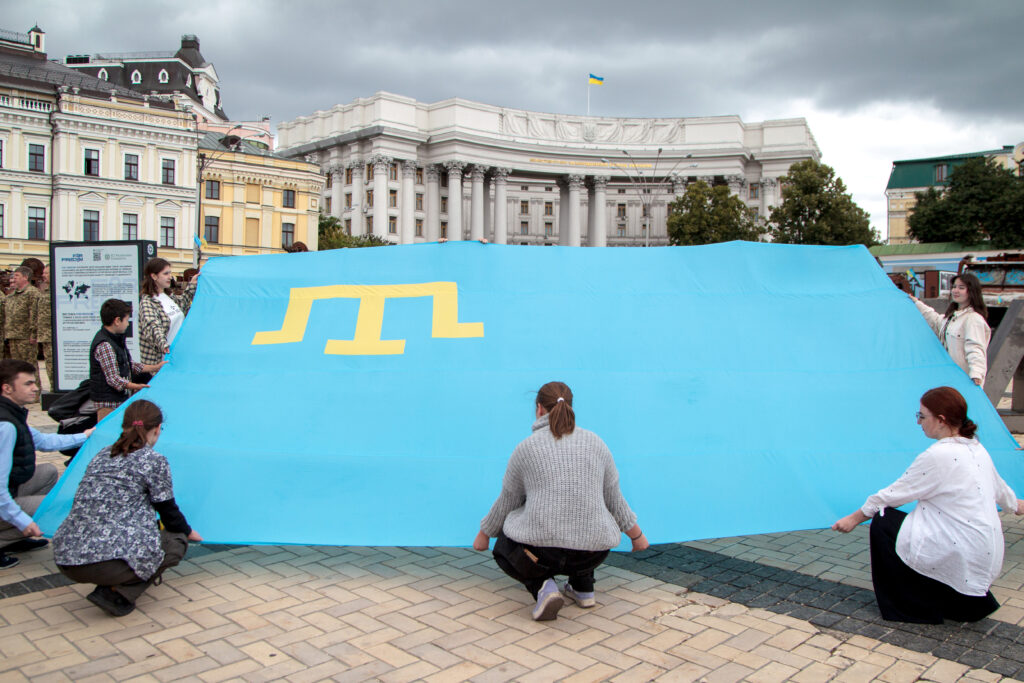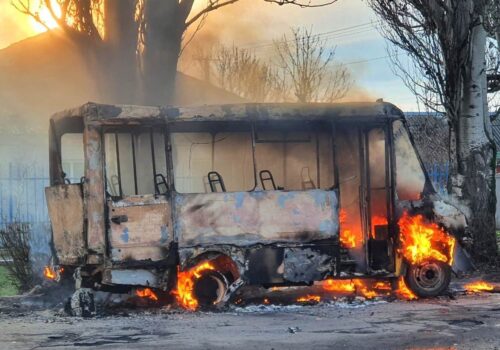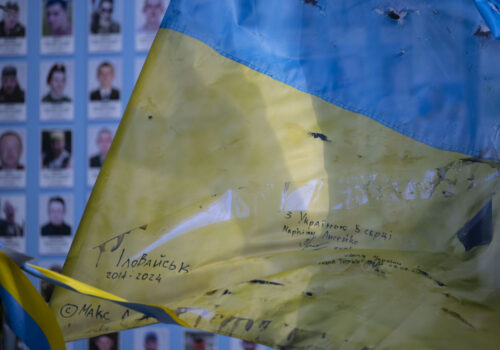Events will take place across Ukraine this week to mark Crimean Tatar Flag Day. However, there will be no celebrations in Crimea itself. The Ukrainian peninsula has been under Russian occupation since the spring of 2014, with the indigenous Crimean Tatar population subjected to more than a decade of oppressive policies by the occupying authorities.
Since the beginning of 2025, US-led efforts to broker a compromise peace deal have focused primarily on talk of territorial concessions and geopolitical alignments. However, the plight of the Crimean Tatars is a reminder that steps to safeguard human rights must play a key role in any future settlement.
Stay updated
As the world watches the Russian invasion of Ukraine unfold, UkraineAlert delivers the best Atlantic Council expert insight and analysis on Ukraine twice a week directly to your inbox.
Since the Russian takeover of Crimea, the peninsula’s sizable Crimean Tatar population has been collectively and systematically persecuted for their perceived opposition to the occupation. For the Crimean Tatars, this mirrors the pain of past experiences with Russian imperialism. Following the Russian conquest of Crimea in the late eighteenth century, the native Crimean Tatar population was subjected to decades of harsh policies by the Russian imperial authorities, leading to a mass exodus.
Worse was to follow. In February 1944, the Soviet authorities carried out the deportation of the entire Crimean Tatar population to Central Asia. More than 200,000 people were forced to abandon their ancestral homeland overnight, with tens of thousands dying in a brutal deportation process and during the initial years of exile.
The deportation of the Crimean Tatars is one of the Soviet Union’s most notorious crimes against humanity. Ukrainian parliamentarians recently appealed to the international community to recognize the deportation as an act of genocide.
In the twilight years of the Soviet era, the Crimean Tatars were finally allowed to begin returning to their homeland. This process gained momentum following Ukrainian independence, with Crimean Tatars accounting for around 15 percent of the peninsula’s more than two million population on the eve of the 2014 Russian invasion.
The current wave of persecution targeting the Crimean Tatar population of Crimea began during the early days of the Russian occupation, with reports soon emerging of Crimean Tatars being threatened, kidnapped, and killed. The body of Crimean Tatar activist Reshat Ametov was discovered on March 15, 2014. He is widely seen as the first victim of the Russian occupation.
Since 2014, hundreds of Crimean Tatars have been arrested on what human rights activists say are falsified charges. Members of the community are currently thought to represent more than half of Crimea’s political prisoners. In 2016, the self-governing body of the Crimean Tatar community, the Mejlis, was officially outlawed and branded an “extremist organization.” Russian raids and detentions in Crimean Tatar districts have become a grim feature of everyday life during more than a decade of occupation.
Eurasia Center events

In addition to facing restrictions on their human rights and political freedoms, Crimean Tatars living under Russian occupation are also currently limited in their ability to honor their culture or express their identity. Indeed, they are not even permitted to stage public memorial events commemorating the victims of the Soviet era deportation. Meanwhile, Crimean Tatar heritage is being erased across the peninsula.
Crimean Mufti Ayder Rustemov is one of many from the Crimean Tatar community who view the current policies of the Putin regime as a continuation of earlier attempts to suppress the indigenous population and russify Crimea. “The goal of Russia has not changed, only the form has changed,” he commented in May 2025.
Russia’s full-scale invasion of Ukraine has dominated the international headlines in recent years and drawn attention away from the ongoing human rights abuses being committed by the Russian authorities in occupied Crimea. However, the situation remains dire. In Freedom House’s 2025 Freedom in the World report, political rights and civil liberties in Crimea received a score of just one out of a possible 100.
As discussion continues over possible deals to end the Russian invasion of Ukraine, Crimean Tatars have been alarmed by reports that the United States may be prepared to recognize Russia’s occupation of Crimea in order to secure peace. US recognition of Russia’s claim to Crimea would represent a major blow to the inviolability of borders, which has served as a core principle of international law for decades. It would also legitimize the further persecution of the Crimean Tatar population.
Any lasting peace must guarantee the security and human rights of Ukraine’s Crimean Tatar population and allow them to live freely in their own homeland. This should include the release of all political prisoners, an end to infringements on political and religious freedoms, and full legal protections for Crimean Tatar heritage and identity.
Russia’s war against Ukraine began in February 2014 with the seizure of Crimea. The persecution of the Crimean Tatars is a constant reminder of this crime and must be addressed before the war can be brought to an end.
Mercedes Sapuppo is an assistant director at the Atlantic Council’s Eurasia Center.
Further reading
The views expressed in UkraineAlert are solely those of the authors and do not necessarily reflect the views of the Atlantic Council, its staff, or its supporters.

The Eurasia Center’s mission is to enhance transatlantic cooperation in promoting stability, democratic values, and prosperity in Eurasia, from Eastern Europe and Turkey in the West to the Caucasus, Russia, and Central Asia in the East.
Follow us on social media
and support our work
Image: Participants in the Crimean Tatar Flag Day celebrations unfurl a 5-by-6-meter flag on Mykhailivska Square, Kyiv, Ukraine, on June 26, 2025 (Photo by Kyrylo Chubotin/Ukrinform) (Photo by Ukrinform/Ukrinform/Sipa USA)





